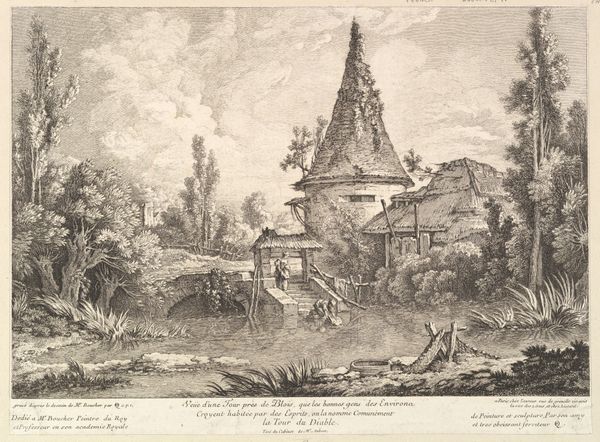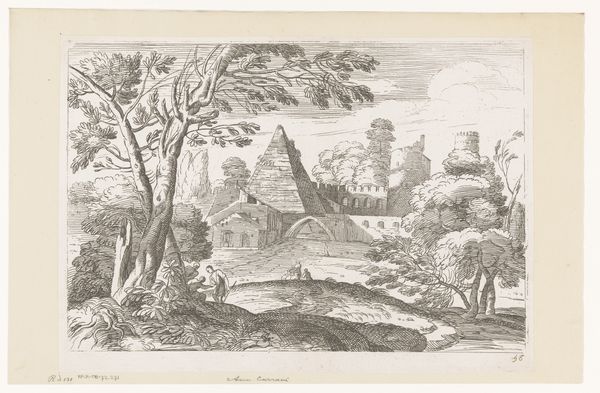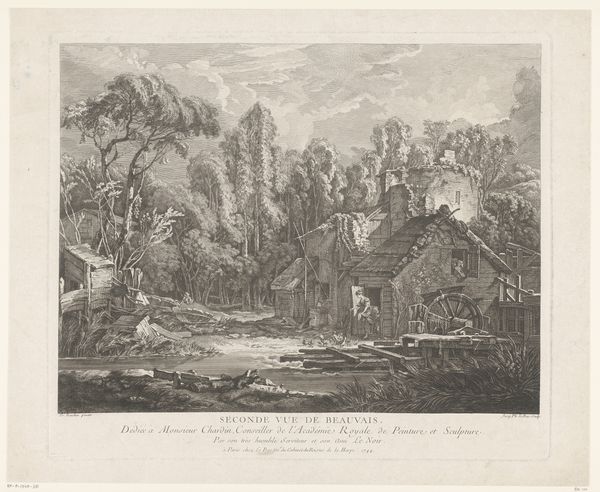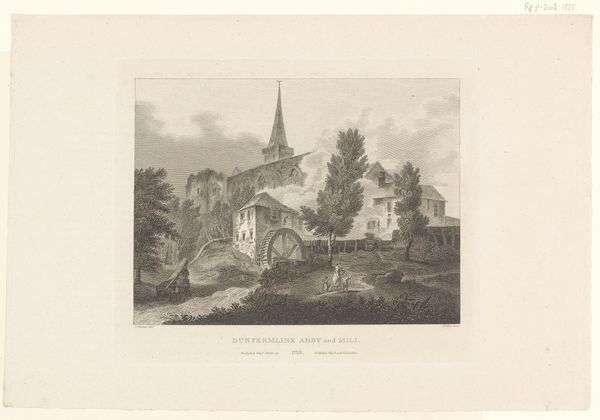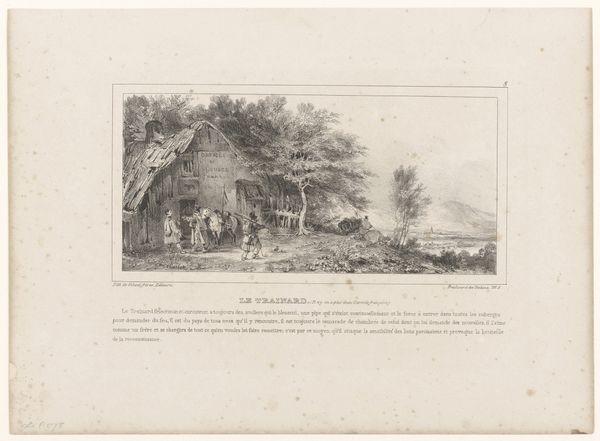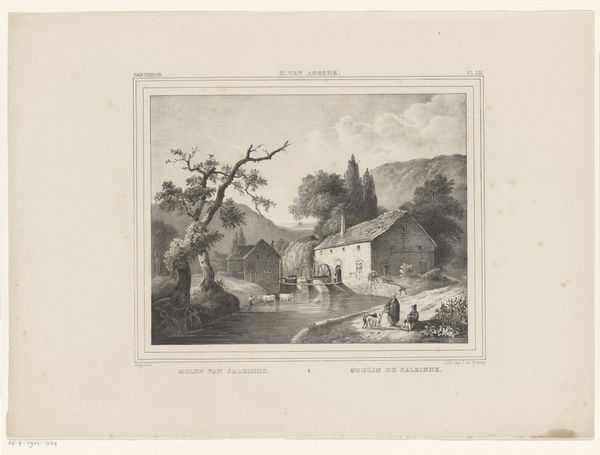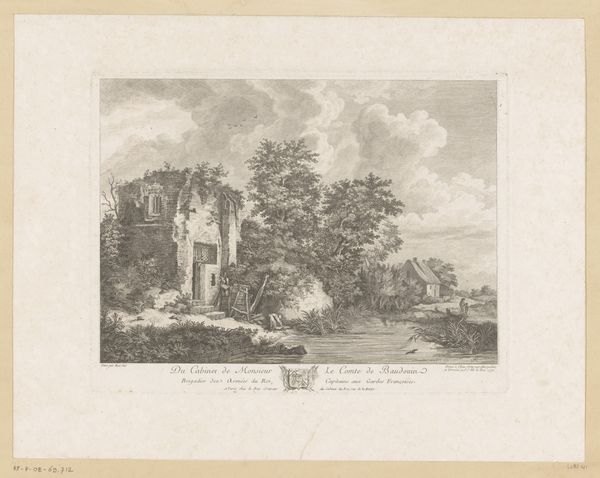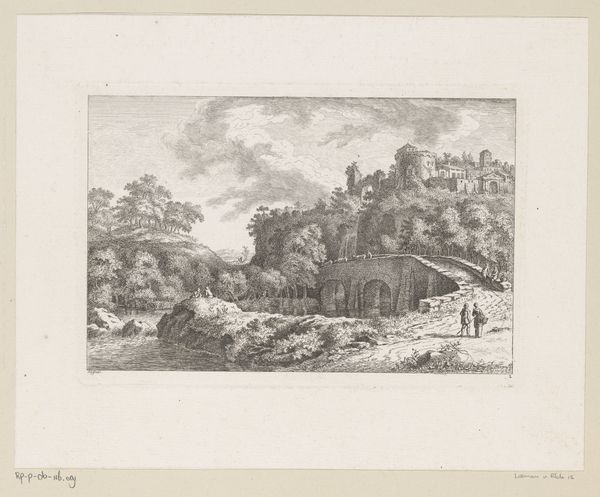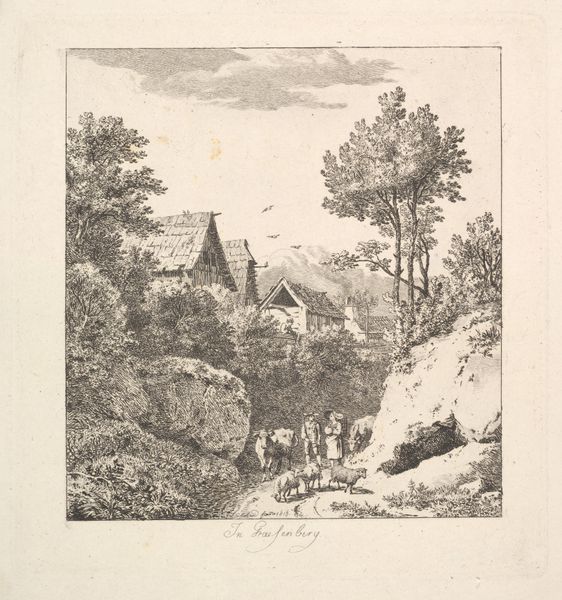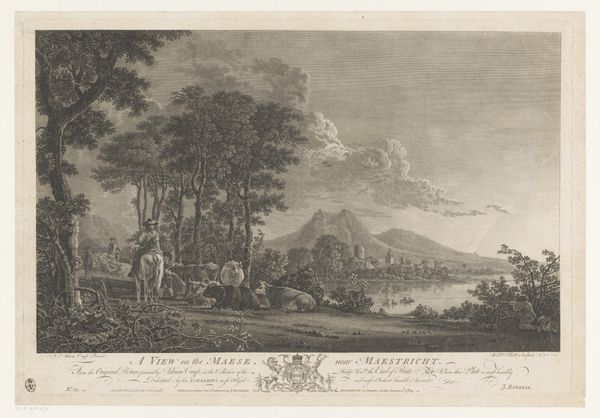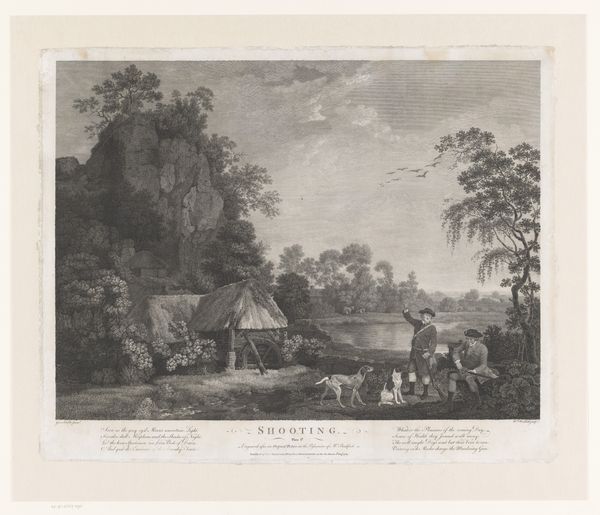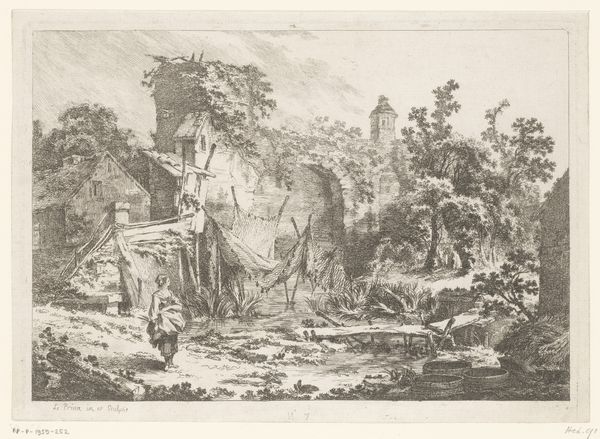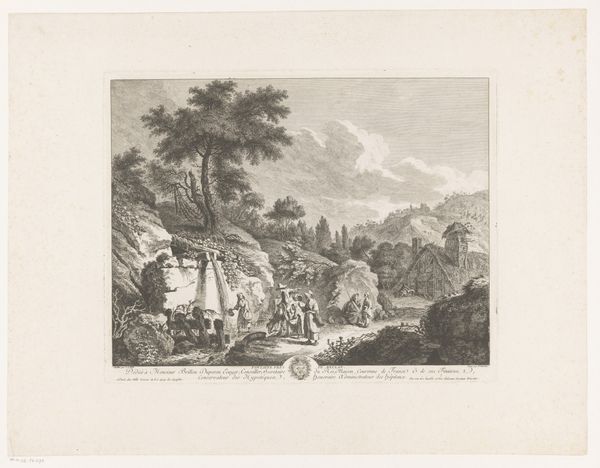
print, etching, engraving
#
baroque
# print
#
etching
#
old engraving style
#
landscape
#
cityscape
#
engraving
#
building
Dimensions: height 377 mm, width 458 mm
Copyright: Rijks Museum: Open Domain
Curator: Here we have Jacques Philippe Le Bas's "Gezicht op huizen en een toren aan een vijver," an engraving from 1744 currently housed in the Rijksmuseum. The old engraving style and overall design strongly suggests it's an excellent example of Baroque landscape printmaking. Editor: It's incredibly detailed. Look at the intricate rendering of the water and the way the light catches the foliage. There's a romantic, almost melancholic quality to the scene. How does the choice of etching, with its implications for labor and craft, influence its aesthetic? Curator: The linear precision achieved through etching is critical. Notice how Le Bas articulates the spatial relationships between the architectural elements and the surrounding natural environment through strict contrasts. The textures—rough stone, still water—create depth and engage the viewer. The tonal range, from deep shadow to bright highlight, underscores the structural clarity. Editor: Yes, the formal clarity is evident. Yet, consider the labor involved: the careful planning, the selection of materials like copper plates and acids, and the manual execution of each line. These choices ground the artwork in its physical making and link it to the economics and social conditions of the time. The skill required underscores artistic craft and labor in what would have been a studio process. Curator: Precisely. Furthermore, Le Bas manipulates perspective to subtly guide the eye through the scene. Observe the converging lines of the architecture and the masterful handling of atmospheric perspective. This controls our gaze and ultimately conveys the thematic concerns around the decay of civilization with a structured formalism. Editor: It's more than formalism alone though; I see an invocation to rural simplicity as opposed to the aristocratic ideal. The social conditions are laid out in the physical forms themselves. The medium becomes intertwined with this representation of class, production and even consumption through access and distribution. Curator: Ultimately, Le Bas's composition transcends its immediate subject matter through formal devices such as visual language. This level of visual control enhances the visual qualities but offers also complex social constructs from a specific time. Editor: Agreed. Thinking through the material and social facets certainly brings the world surrounding this print into much sharper focus, making the experience more powerful.
Comments
No comments
Be the first to comment and join the conversation on the ultimate creative platform.
